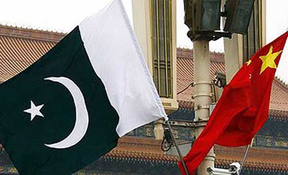 ISLAMABAD: Three leading physicists have raised key questions about the safety, design and cost of Pakistan’s largest nuclear power plant being built with Chinese assistance in the port city of Karachi.
ISLAMABAD: Three leading physicists have raised key questions about the safety, design and cost of Pakistan’s largest nuclear power plant being built with Chinese assistance in the port city of Karachi.
The Karachi complex will have two nuclear reactors with a production capacity of 2,200 MW. Prime Minister Nawaz Sharif inaugurated the project, estimated to cost USD 9.6 billion and scheduled to be completed in six years, late last month.
In an article published in the influential Dawn daily today, experts Pervez Hoodbhoy, A H Nayyar and Zia Mian said the project would use a reactor being developed by a Chinese state-run firm that currently exists only on paper.
“This will be by far the largest nuclear construction project ever in Pakistan. It is not too late to ask a few basic questions so that people, especially those living in Karachi, know what they may be letting themselves in for,” they wrote.
They said everyone knew the reactors were being purchased from China, and will be built by the China National Nuclear Corporation (CNNC).
“What people may not know is that the reactors will be based on a design known as the ACP-1000 that is still under development by this Chinese nuclear power company,” they said.
“In effect, Pakistanis are buying reactors for the Karachi site that so far exist only on paper and in computer programs – there is no operating reactor in China based on this design.”
It was reported in April that CNNC had completed a “preliminary safety analysis report” and was “working on construction design” of the ACP-1000. This means there is not even a complete design so far.
Since the reactors at the Karachi complex will be the first of a kind, no one knows how safe they will be or how well they will work, the article said.
The 20 million people of Karachi are being used as subjects in a giant nuclear safety experiment, the experts contended.
The article said an analysis in 2011 by Nature science magazine and Columbia University in New York showed that the nuclear reactor site in Karachi has more people living within 30 km than any other reactor site in the world.
It found there were eight million people living within this distance of the site in Karachi. All of the port city falls within 40 km of the reactor site. The article said so far, there have been no public hearings or discussions about the suitability of the site for the Karachi nuclear complex.
“There is no report of an Environment Impact Assessment for the proposed new Karachi reactors. Neither the Pakistan Atomic Energy Commission nor the Pakistan Nuclear Regulatory Authority has explained what will happen in case of an accident at the proposed reactor,” it said.
The experts said there is no information on what emergency plans, including for possible evacuation, have been drawn up as part of preparations for these large new reactors. There is no information whether such plans even exist.
They further said the issue of cost must include the consequences of accidents. “If there is an accident at the new Karachi reactors due to a problem with the reactor design or the construction, who will pay the vast sums needed to cover the damage and clean-up – Pakistan or China?” they questioned.
Hoodbhoy is a nuclear physicist and defense analyst while Mian is a Pakistani-American physicist, nuclear expert and policy maker and research scientist at Princeton University.
Nayyar is a physicist and nuclear activist who specializes in solid state and quantum physics and quantum mechanics.
They said the Fukushima nuclear accident had shown that safety systems can fail catastrophically. The accident in 2011 involved Japanese reactors of a well-established design that had been operating for decades.
All kinds of things happened that were not expected by the reactor operators, managers and nuclear safety authorities.
Nearly 200,000 people living close to the Fukushima reactors were evacuated and some may never be allowed to return, they pointed out.
Radiation was blown by the wind and contaminated land to distances of over 30 km.
“The US suggested its citizens living in that area of Japan move at least 80 km away from the reactor. The government of Japan considered forced evacuation of everyone living within 170 km of the reactor site and organizing voluntary evacuation for people living as far as 250 km from the plant,” the article said.
“Contaminated food and water was found at distances of 250 km. The financial cost of the clean-up so far is estimated to be about USD 100 billion and could eventually be much higher.
“So how big, how dangerous and how costly is the nuclear experiment about to be carried out in Karachi?” the experts questioned. -PTI






